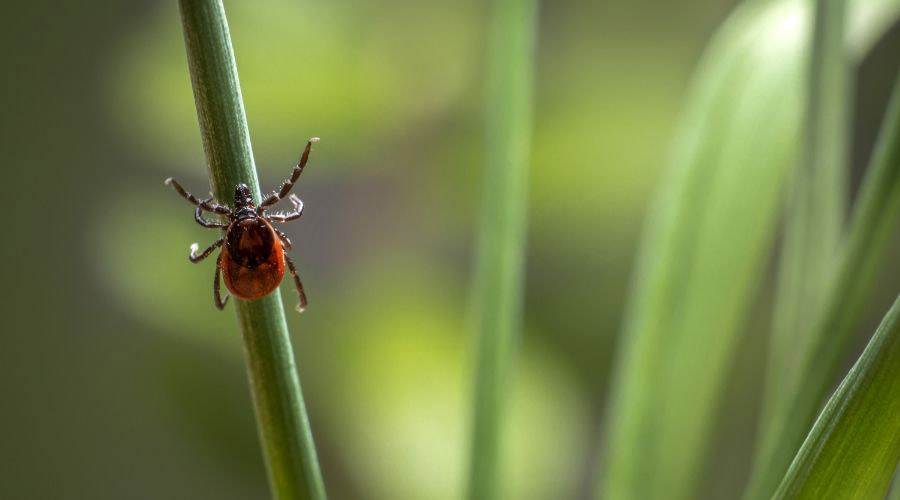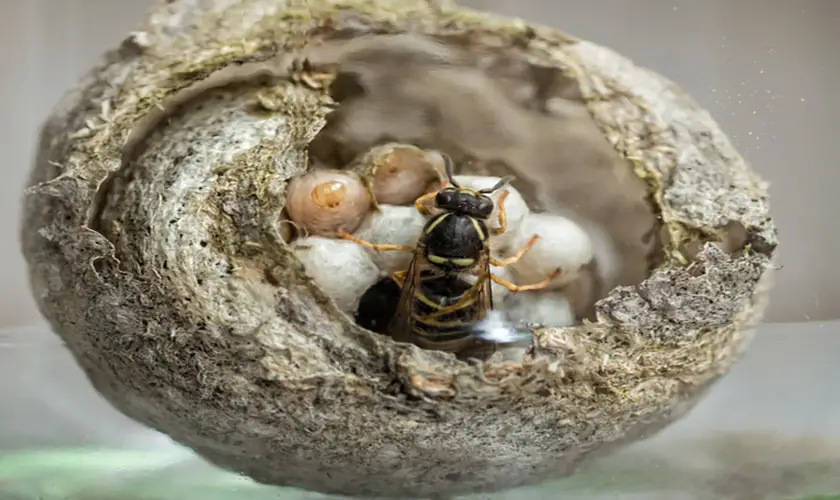
As summer starts to hit in full swing, all of our favorite things become more normalized, ranging from picnics, park outings, going to the beach, barbecues, and the guests who show up to all these functions un-invited. Ticks will be there to ruin festivities, but thankfully there are many ways to keep these critters out of your hair and skin. How is that so?
Rosemary is an excellent deterrent for ticks because of its strong smell. If you don’t have access to the plant, using rosemary essential oils can help. However, you will need to continue spraying or sprinkling the oil in your yard, so having the herb planted where it is wanted is the ultimate best choice.
Ticks are some of the most annoying and sometimes dangerous pests we have to deal with as summer activities enter our lives again. Fear not, for we will be going over the many plants that can combat them and, more importantly, how they do so!
Get FREE quotes from licensed pest control technicians in your area today. Whether you need spraying for ants, roaches, spiders, ticks, mosquitos, or bed bugs, We Can Help! All technicians are screened, licensed, and insured.
Why Are Ticks Such A Threat To Us?
Before we dive deep into why rosemary and other notable herbs keep ticks away, it’s essential to understand what kind of threats ticks pose to you in the first place.
Aside from being frankly disgusting parasites that feed on your blood, ticks have several potentially deadly diseases they can transfer. If left unchecked, these diseases can have some truly devastating health issues.
The first of these diseases would be Lyme disease, which, taken care of early on, doesn’t pose much of a threat to you outside of the standard EM rash (Erythema migrans), fever, chills, and headaches.
However, suppose you let the infection go on for months. In that case, it can give you heart palpitations, facial palsy, severe variants of arthritis and scaling degrees of pain alongside it, and brain inflammation. The second reason to combat ticks in your area would be Rocky Mountain spotted fever.
Now, RMSF, for short, is much rarer, with roughly only 20,000 documented cases in the United States per year; it is nothing to scoff at either, with fever, headaches, vomiting, and nausea making appearances you certainly wouldn’t want to contract this either.
Does Rosemary Keep Ticks Away?
The short and sweet of this question is rosemary does indeed keep ticks away, but the miracle of how they go about doing it is the exciting part.
Ticks despise the strong scent of rosemary, along with quite a few other fragrant herbs, to the point where they will outright avoid an area entirely if it smells of it. The best part about this is that you don’t need to plant the herb to gain these benefits. Sprinkle some fresh rosemary sprigs around the base of your garden or chosen area, and it will remain tick-free.
Ticks aren’t the only thing rosemary will keep away, though. This plant will act as a deterrent against many common garden pests as well, including flies, aphids, and mites. Assuming you are working with a garden, this is especially useful, but keeping flies away from your delicious barbeque is a bonus.
What Other Plants Keep Ticks Away?
Rosemary is a beautiful plant with many excellent deterrents for ticks and their friends, but let’s go over the plethora of other plants that can offer similar protection from ticks and a few other unique niceties.
1. Lavender
As a plant, lavender is beautiful for what it offers. It has diverse variants depending on what species you decide to plant and keeps the staple ticks out of sight. Keeping ticks at bay is just one of the fascinating things about lavender. However, most people don’t know there are 47 known species of specialized flowering plants that all belong to the mint family!
Lavender or “Lavandula” can also be used for culinary purposes or potpourris. So using this beautiful plant inside and outside your home makes sense and will brighten any purple palette home and complement many different floral arrangements.
2. Garlic
When it comes to garlic, most people run with the notion that it is just for cooking with, and granted, it is a great ingredient, to be sure, but it also can stave off our blood-sucking friends.
Popular culture aside, we are talking about ticks, not vampires, although without brushing your teeth after ingesting some, you might keep everyone at bay! Like many other plants on this list, garlic will keep ticks back due to its overwhelming scent but has a few other notable traits, like being utilized in traditional medicine.
Some of these uses range from combating the common cold to increasing your overall cardiovascular health. While much more research is needed to verify claims, some publications suggest garlic may reduce the chance of certain kinds of cancers.
3. Pennyroyal
Yet another purple contender enters the ring, bringing another strong scent with it, but this time leaning much closer to spearmint than anything else. Pennyroyal, or “Mentha Pulegium” for our more scientifically inclined friends, isn’t relatively as healthy for us as the other alternatives on this list.
While outwardly looking beautiful with its vibrant purple flowers, Pennyroyal is quite toxic to us if ingested. This is interesting in older times, particularly the Roman, Medieval, and Greek times. It was considered to be useful for medicinal purposes.
The amount a person can consume that would be beneficial is still up in the air until this day, with cases dating back to 1896, when a young woman passed away from simply ingesting a tablespoon.
4. Pyrethrum (Chrysanthemum)
Entering now is a tried and true plant used entirely for insecticides for several centuries, the Chrysanthemum. The plant’s flower petals come in a very distinct white and off-pink, red hue, following a daisy-like shape, and like the Pennyroyal, it can be toxic, as its insecticide usage might suggest.
The plant is still considered harmful and limits how much one can be exposed. Despite being potentially hazardous when consumed, the plant will most definitely ward off ticks and quite a few other insects while you are at it.
5. Sage
Straying away from the more deadly tick-deterring plants, we have the Sage, a beloved herb known worldwide for its culinary benefits and wide array of traditional usage.
In its essential oil form, you can spritz it around the outside of flower beds or your property line to benefit from keeping ticks and other insects at bay or ingesting some of the plants. There have been several claims that specific extracts of the two classes of this plant:
These two can positively affect brain function among humans, citing increased or improved attention and memory in people of all age groups and people who suffer from Alzheimer’s Disease. These claims are staggering, to say the least, with one notable downside being the Thujone that is always present in Salvia extracts can potentially be neurotoxic.
On a more historical note, the same Genus Salvia officinalis has other usages dating back to older times for more mystical purposes, ranging from increasing a women’s fertility rate, warding evil spirits, and at times being seen as a supposed holy herb. The Romans primarily did this, but humans carried this high reverence throughout most Middle Ages.
6. Beautyberry
Otherwise known as Callicarpa Americana, the American Beautyberry is a shrub unlike most other entities on this list. As the name suggests, the shrub bears fruit in the form of small, purple berries, which can sometimes also be white.
These fruits can be eaten and made into wines or jellies for typical consumption. The seeds inside the berries make up an essential food group for quite a few birds, most notably the Northern Bobwhite.
Several other animals enjoy eating the shrub itself, but as always, there will be something that doesn’t want it just as well, that something, in this case, being the estranged tick. The shrub can complement most sceneries and yield berries well through fall and even early winter. It is also known to attract all manner of birds and butterflies.
As for medicinal purposes, Native Americans often used the root and made a tea of the leaves to treat fevers, rheumatism, and malaria. The tea made from the roots of the Beautyberry was an effective treatment for stomach aches in general and, at times, dysentery.
7. Eucalyptus
Few on the list have as wide a family tree as the eucalyptus, with a genus of over seven hundred species robust, ranging from shrubs to beautiful flowering trees. It’s easy to see how this plant could have snuck onto this list.
The aromatic scents of the eucalyptus can ward off ticks in itself, but the historical value of the eucalyptus stretches so much deeper than that. With so many different species, it won’t be easy to connect them all, but aesthetically speaking, the eucalyptus tree comes in five distinct patterns.
- Ironbark: Typically rough and rugged, with deep lines complemented by the sap, it leaks, giving off a dark color ranging from shades of black and red.
- Tessellated: Bark resembles a vast network of individual flakes that can flake off.
- Ribbon: The bark peels in long, ornate, thin pieces but can be loosely held occasionally, with the strings sometimes tightly curled or firm strips.
- Box: Usually shapes into multiple short fibers that appear to overlap each other.
- Stringybark: Often has a sponge-like texture that is made of long fibers.
Uses from the Eucalyptus range from the oil harvested through steaming the leaves, making many products like antiseptics and solvents, and lesser amounts making up toothpaste, cough drops, and sweets.
The oil is where we turn to for the tick and general insect repellent properties. Still, the list goes on with usage going to making dyes, musical instruments, papermaking, and even prospecting.
8. Mint
Where would we be if not for this wonderfully scented plant, if not in various stages of unyielding bad breath? Jokes aside, mint is known as a perennial herb and, most notable, has a powerful, aromatic odor. Its flowers are typically white and purple and are attributed with medicinal, culinary, and cosmetic benefits, dabbling at times into the side of insecticides.
It can go across most platforms as with all culinary-based usage, but its actual benefit comes from being utilized in dishes that need a more refreshing aftertaste. So most beverages can use, but it is trendy in the realm of sweets. Things like candies and ice creams are where it truly shines.
As far as medicinal purposes go, its most prominent use comes from acting as a kind of mild stomach-easing herb, and to some, rubbing it on your chest would also relieve certain types of chest pains. The minty scent also lends itself to perfumes and other decorative ornaments associated with being well presented or clean.
Like all strong-smelling plants, herbs, and shrubs, the intense scent from the mint is well documented in fighting back insect hordes, but more so due to it being delightful to smell and eco-friendly. It has the innate ability to outright kill some of these pests, like roaches, hornets, wasps, and even ants.

How To Make Your Own Tick Repellent
Growing these plants outside your home is a fantastic choice, but the only downside is how time-consuming it is to cultivate them before you gain the tick deterrent advantages of having them.
Thankfully there are a few alternatives to this, and one of them is making your very own tick repellent from things you may already have in your cabinets! The first of these two options would be the more straightforward organic approach to making a spray out of the Rosemary herb we spoke of earlier.
Making this spray is pretty easy to start with.
- Step 1: You will need to bring 4 cups of water to a rolling boil in a saucepan. Once you hit that threshold, remove it from the heat.
- Step 2: Add one ounce of dried rosemary to your pot, gently stirring it to get the contents well soaked in the pan.
- Step 3: Afterward, you will want to replace the lid on the pan and let it all steep overnight, straining the entire thing the following day directly into your favored spray bottle of choice.
You will need to make the mixture a bit more potent. To do this, add one tablespoon of white wine vinegar, finishing the process by attaching a lid to the bottle and rotating the mixture in a circle to get everything mixed properly.
- Step 4: Finally, you will spray the solution into any desired spot you don’t want to see ticks going around, ranging from the outskirts of your home to directly on your skin or clothing if you plan to take an outing.
Not everyone has the same tolerance for these kinds of in-home remedies, so sample a bit on yourself in a small spot to check if you are extremely sensitive to these kinds of sprays.
What Scents Are Ticks Attracted To?
By this point, we’ve gone over what scents ticks hate, but let’s briefly talk about the ones they are attracted to and would bring your presence to their full attention.
Ticks are predatory in finding food and tracking you down by the carbon dioxide we release when we exhale. This burst of carbon dioxide acts more or less like a homing beacon to them and will guide them directly to our feet for the meal they so desperately desire.
This beacon is bad enough, but if you are already outdoors, nature does eventually come calling, and in this place, we give ticks yet another method of tracking us down. When you urinate outside, you are releasing a high amount of ammonia. This chemical burst will send the ticks scurrying to that location for a quick bite to eat.
You also excrete ammonia when you sweat, so the ticks will be at your heels from generally being outside if you aren’t well prepared. Using this tick repellent on yourself before any outing will dramatically reduce the likelihood of ticks latching on you or your clothing.
Final Thought
Ticks will be a problem regardless of where you go or what you do. The amount of effort you put into providing a barrier between them and you will decide whether or not they are an issue for yourself, your family, and your pets.
Some other things you could do to keep ticks away from you would be to keep your lawn in check by mowing regularly, removing extra piles of leaves or excessive brush build-up, and removing shady hiding spots, as these are prime hiding spots for ticks.
Keeping your animals out of heavily forested areas as best you can also mitigate ticks getting into your life, and due diligence will keep these fiends far from thought and, at the very least, off your body!
Get FREE quotes from licensed pest control technicians in your area today. Whether you need spraying for ants, roaches, spiders, ticks, mosquitos, or bed bugs, We Can Help! All technicians are screened, licensed, and insured.








